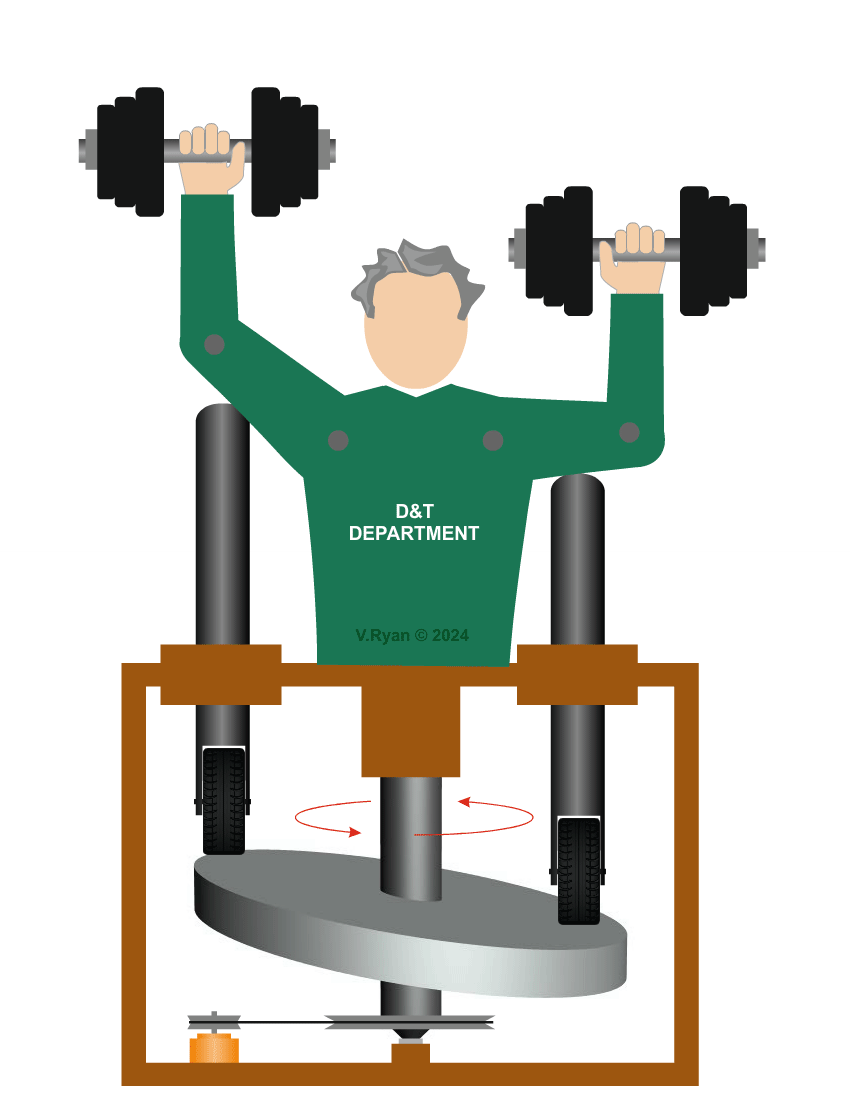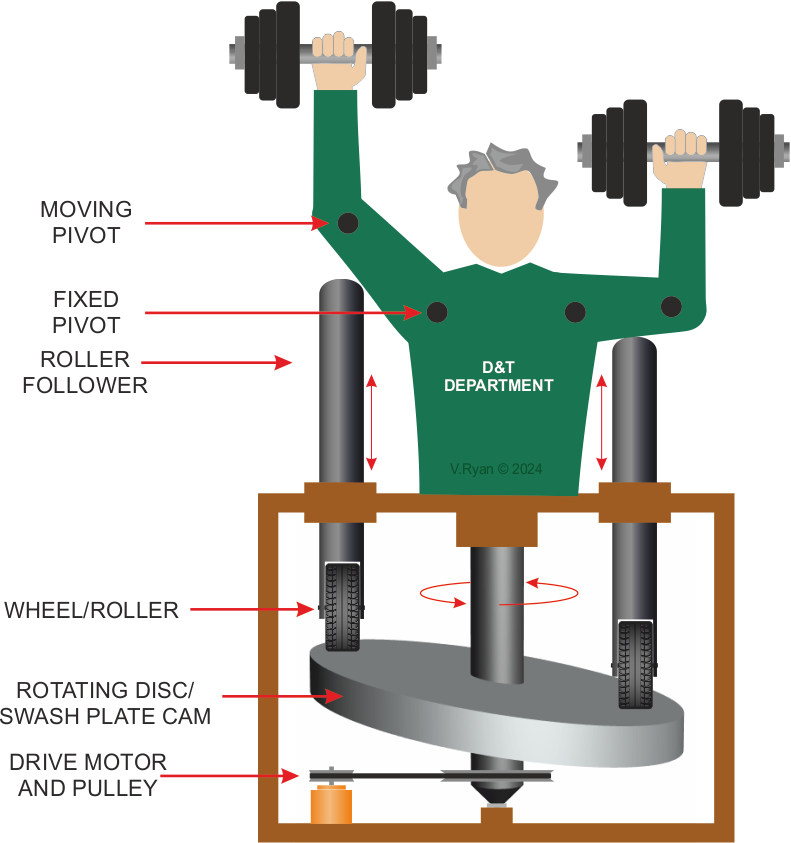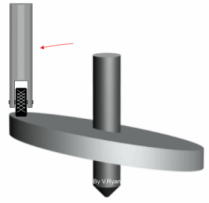| CLICK HERE FOR INDEX PAGE | |
| SWASH PLATE CAMS | |
| V. Ryan © 2006 - 2024 | |
| PDF FILE - CLICK HERE FOR PRINTABLE WORKSHEET | |
| CLICK HERE FOR POWERPOINT VERSION OF WORKSHEET | |
|
A swash plate cam is usually a disc that rotates
around a shaft. The disc is set at an angle so that the follower moves
up and down as the disc rotates. |
|
|
A mechanical toy is seen below. As the swash plate cam rotates (driven by a small motor), the two roller followers rise and fall. This motion makes the model look as if it is lifting weights / exercising. The cam mechanism would normally be ‘boxed in’ for safety reasons. However, on the drawing below the front has been removed so that the mechanism can be clearly seen. |
|
Swash cams have ‘roller’ followers, because they ‘act like wheels turning as the cam rotates. A flat follower would jam / fail as it would create too much friction between the follower and the cam. The low voltage drive motor is connected to the swash cam by a pulley system. This means that the motor can be positioned away from the moving parts. A small pulley is connected to the motor and a larger pulley to the cam. This slows down the cams rotation. If pulleys were not used, the rotation of the cam would be too fast. |
|
 |
|
 |
|
|
QUESTIONS: |
|
| CLICK HERE FOR MECHANISMS INDEX PAGE | |
|
|
|
